You can listen to or watch this article here:
Just like Bitcoin has the Bitcoin Improvement Proposal (BIP) process and Ethereum has the Ethereum Improvement Proposal (EIP) process, Ethereum Classic has the Ethereum Classic Improvement Proposal (ECIP) process.
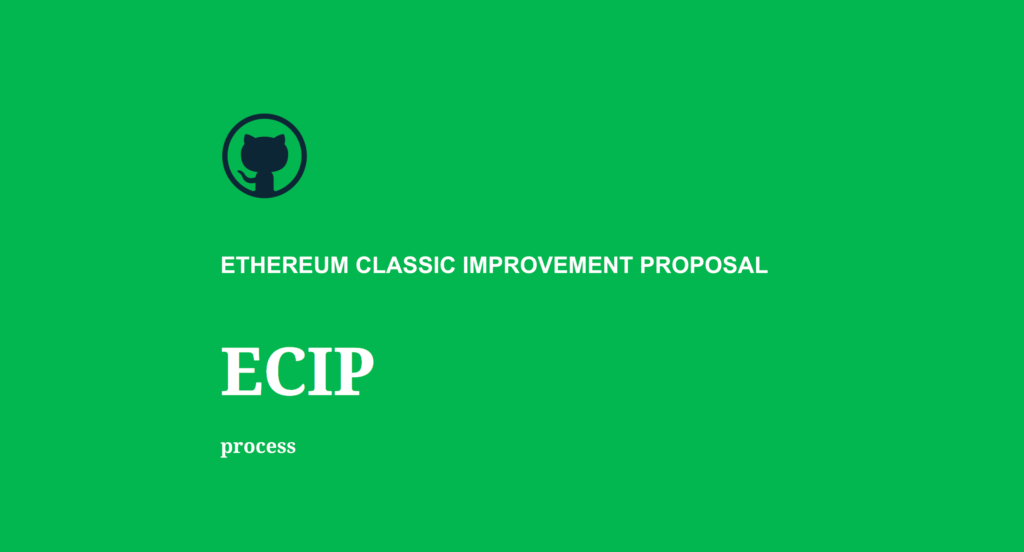
If you are a developer, miner, full node operator, any other stakeholder, or just a person interested in proposing something useful for Ethereum Classic (ETC), you are totally welcome to participate. This article may serve as a guideline. Following is a description of the important parts of the process.
1. The ECIP Website
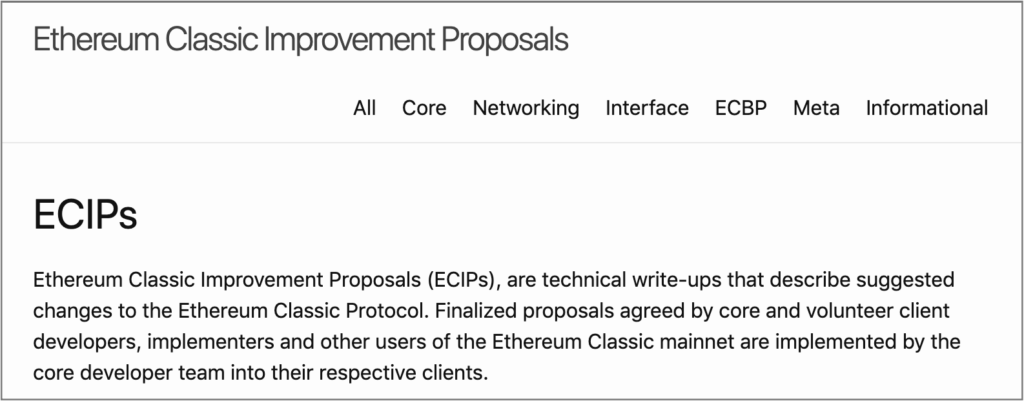
A good starting point to browse the current state of the ECIPs is to go to the main directory on ecips.ethereumclassic.org. There, you will find they are organized by type and status, and when you click on any of the ECIPs you will be able to read them.
2. The ECIP Github Repository
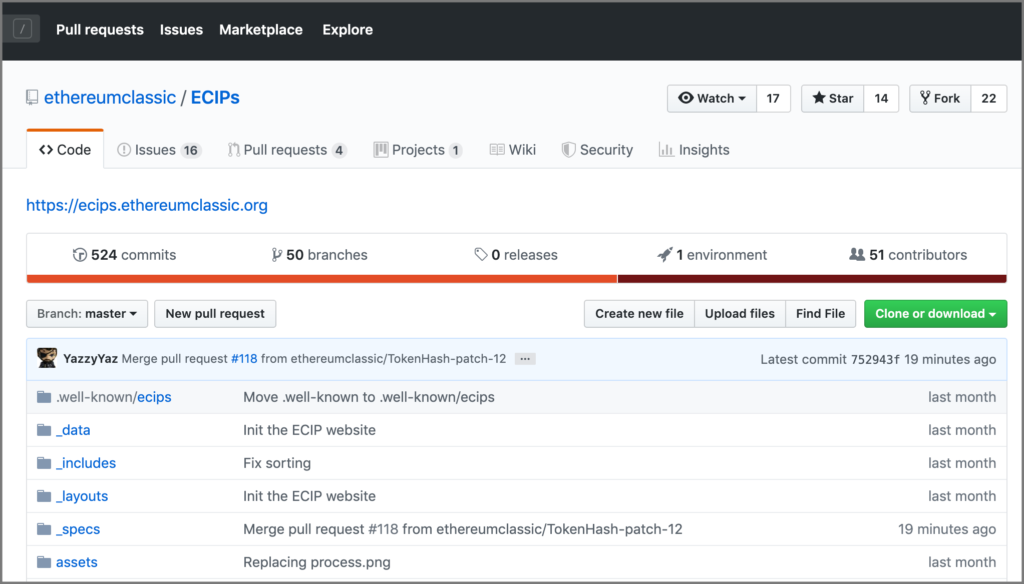
If you wish to work on any ECIP, propose changes or start a new improvement proposal, you will need to go to the ECIP repo on Github. There, you will be able to fork the repo, enter commits, create new pull requests, or initiate issues and participate in the discussions in any of the ECIPs. It could be said that the site is for display and organization of the ECIPs, and the Github repo is for actual work.
3. The README.md File
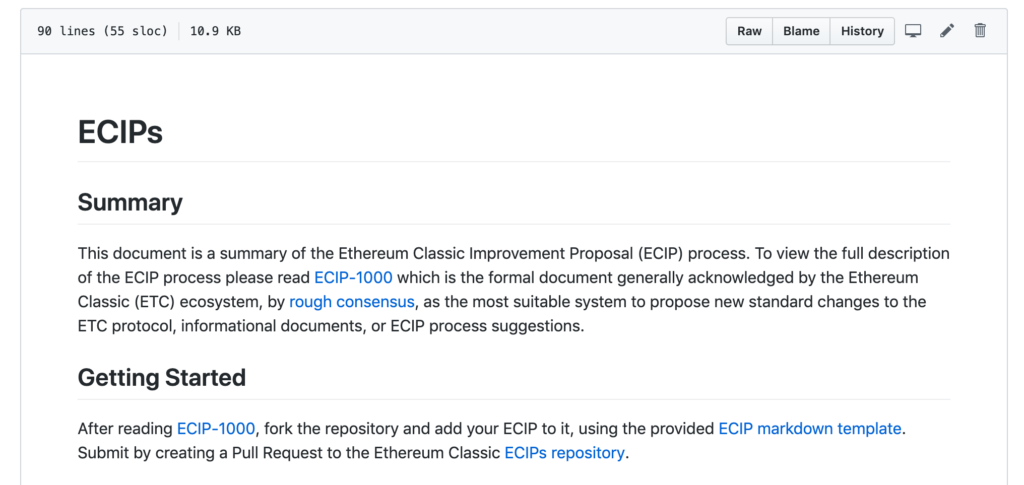
If you scroll downwards or if you click on the README.md file, you will find the introduction and initial instructions of how to participate in the ECIP process. It is important to follow the steps indicated there, so your proposal can be correctly introduced and have the proper attention by other participants to be analyzed.
3.1. In the document you will find a guide of who are the types of participants in the process

3.2. And you will see a summary of the status terms that each ECIP has to go through depending on its type
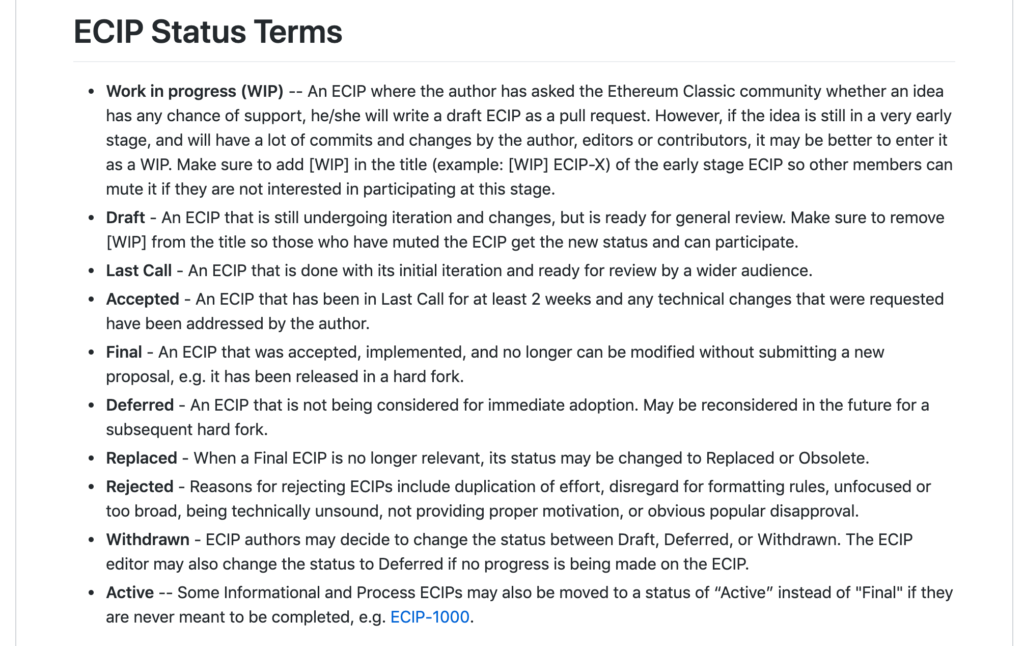
4. The Formal ECIP Process: ECIP-1000
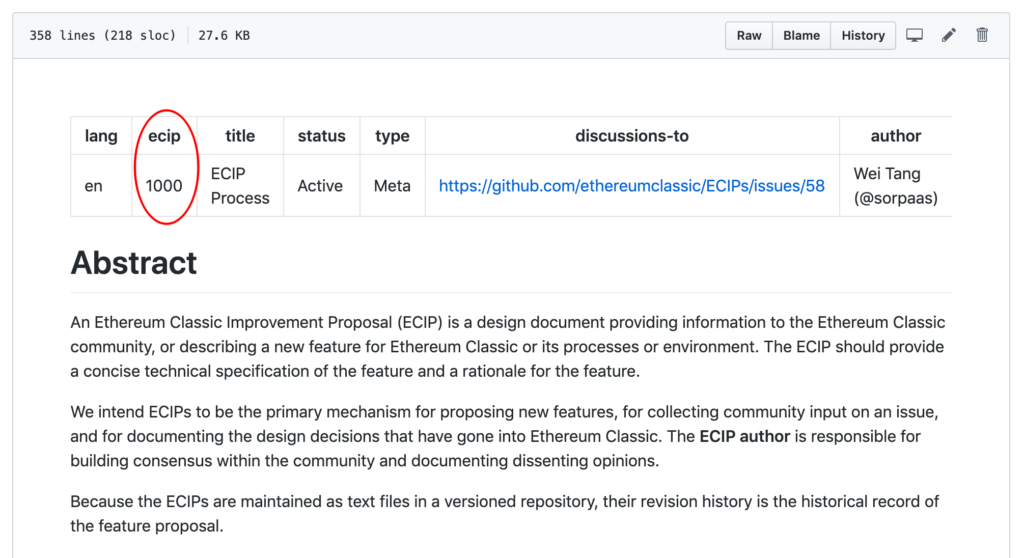
The ECIP process is actually an ECIP with the number 1000. It is a “Meta” ECIP. In it, you will find everything you need to know about the structure and rationale of the process. This includes the responsibilities of the editors, how to format the ECIP with a preamble, the proper sections, and what are the types of ECIPs.
4.1. The editors are defined on ECIP-1000
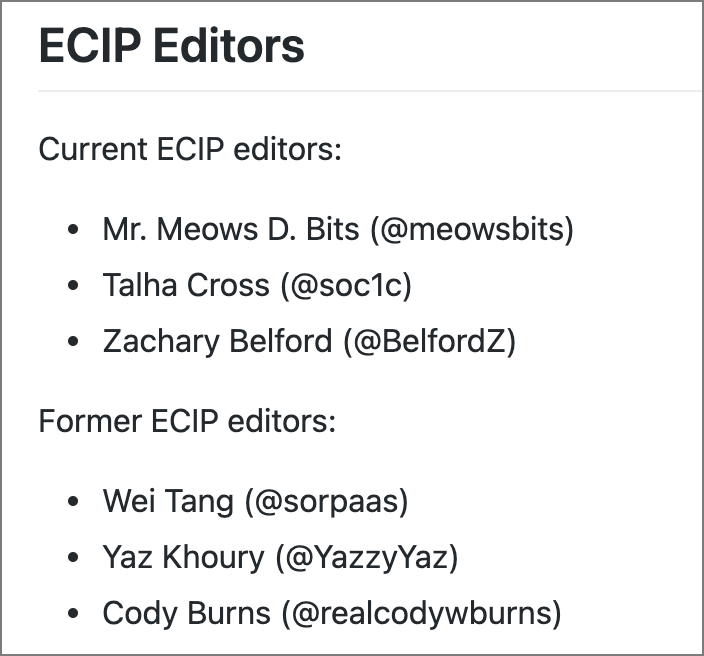
4.2. The ECIP Types can be found on ECIP-1000
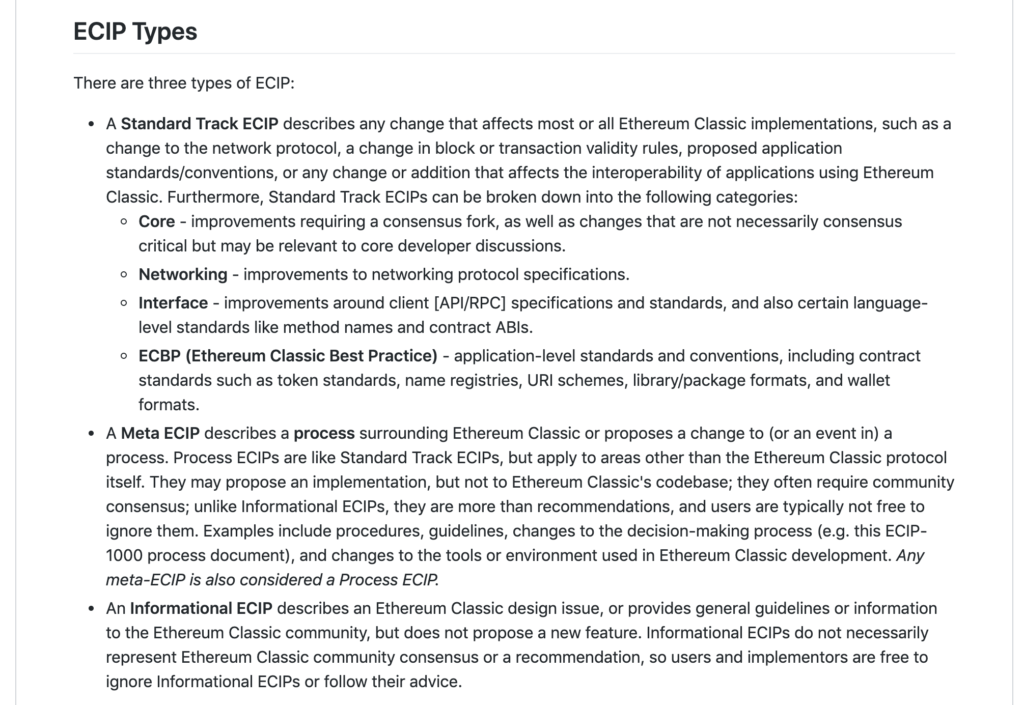
5. An ECIP Template: ECIP-X

For your convenience, your are invited to use the ECIP-X template to start a new ECIP. It has the preamble header and the different sections already defined so you can start writing your proposal in markdown (.md) language.
6. Finding The ECIP Directory on the ECIP Repo on Github

Although you can see all ECIPs on the ECIPs site, you can also find all the original documents on Github. To find it, you can go to the repo home page, and select the _specs folder.
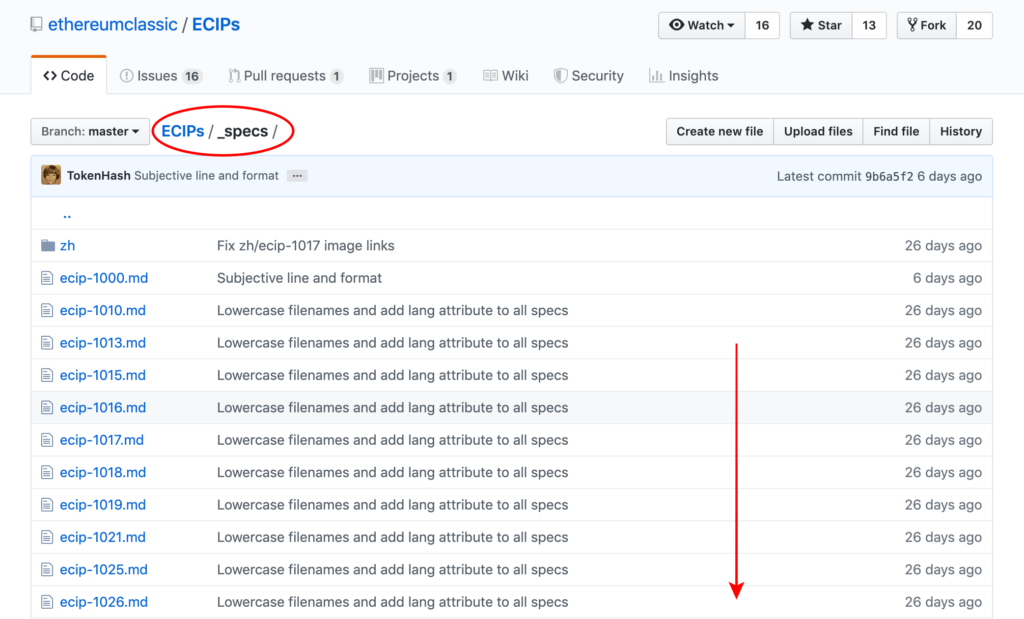
When you open it you will see it is a long list containing all ECIPs organized by number, starting at #1000, regardless of type or status.
7. Summary
We hope you find these guidelines useful. Please feel welcome to participate and contribute to Ethereum Classic!
These are the links to all the resources listed above:
- ECIPs Site: https://ecips.ethereumclassic.org/
- ECIP Github Repo: https://github.com/ethereumclassic/ECIPs
- ECIP README.md file: https://github.com/ethereumclassic/ECIPs/blob/master/README.md
- ECIP-1000, the process: http://ecips.ethereumclassic.org/ECIPs/ecip-1000
- ECIP-X Template: https://github.com/ethereumclassic/ECIPs/blob/master/ecip-X.md
- ECIP Directory on Github: https://github.com/ethereumclassic/ECIPs/tree/master/_specs
8. Additional ETC Ecosystem Resources
Additionally, please don’t hesitate to join the Ethereum Classic Discord to ask questions, to be updated, or any other topics related to ETC:
https://discordapp.com/invite/HW4GckH
8.1. Other
Code Is Law